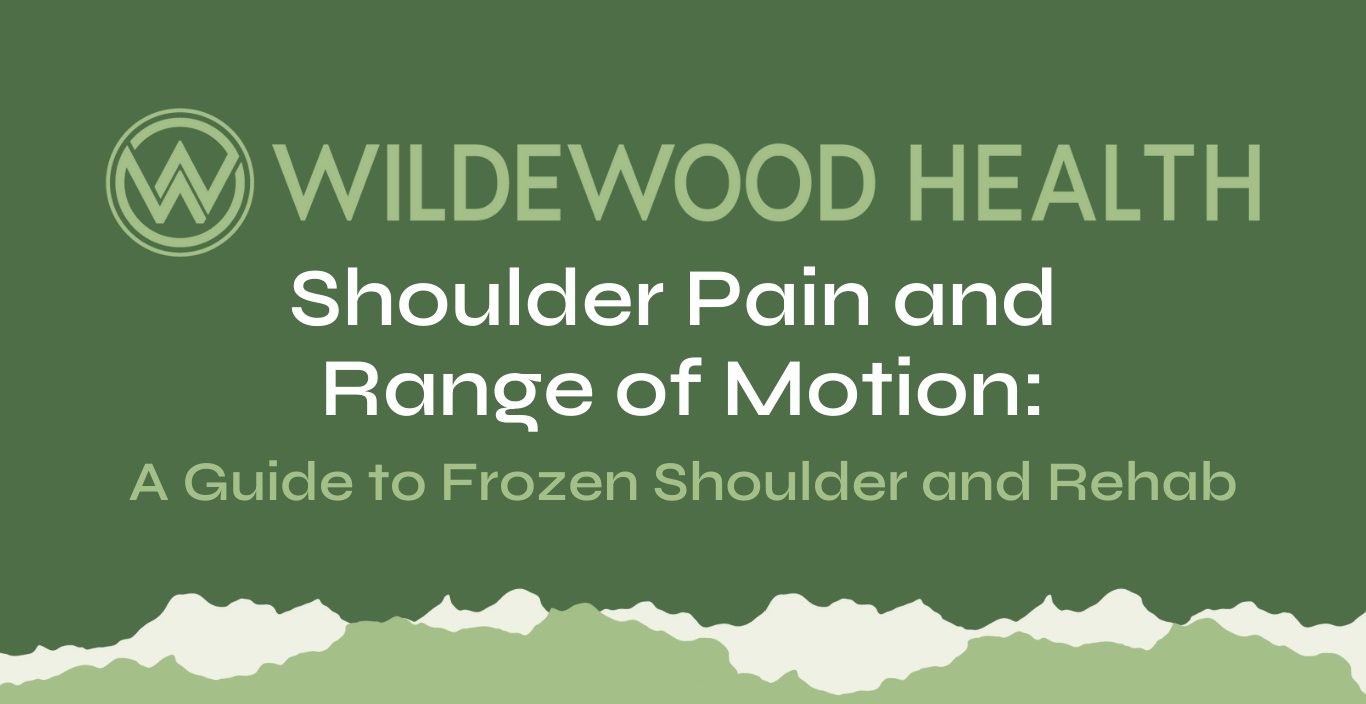Shoulder pain can be a significant hurdle, especially when it affects your range of motion (ROM). In this blog post, we will delve into the world of shoulder pain, frozen shoulder, and effective rehab strategies to regain that crucial range of motion.

Understanding Frozen Shoulder
Frozen Shoulder, or Adhesive Capsulitis, is a condition marked by shoulder pain and a severe restriction in range of motion. It involves inflammation of the shoulder capsule, leading to pain and restricted ROM.
Frozen Shoulder can occur for various reasons, including trauma, underlying pathologies (like osteoarthritis or diabetes), or even poor posture.
Anatomy
The bones (humerus, clavicle, scapula), muscles (rotator cuff, deltoids), and ligaments (glenohumeral, coracohumeral) can all be affected.

Signs and Symptoms
Recognizing the signs and symptoms of frozen shoulder:
- Pain: It can be persistent, both at rest and during shoulder use, often leading to night pain.
- Strength Loss: Reduced strength in the affected shoulder.
- ROM Limitation: Severe restrictions in your ability to move your shoulder.
Shoulder Rehab
Effective shoulder rehab is crucial to overcome frozen shoulder and regain your range of motion:
- Ice and heat: Start with ice to reduce inflammation, then apply heat after 48-72 hours to increase muscle laxity.
- Soft Tissue Treatment: Targeting shoulder muscles (deltoids, pecs, traps, rotator cuff) to relieve tension and pain.
- ROM Exercises: Specific exercises for the shoulder girdle and rotator cuffs are essential for improving range of motion.
- Mobilization: Techniques to enhance movement within the glenohumeral joint.
- Stretching: Use Proprioceptive Neuromuscular Facilitation (PNF) techniques to increase muscle flexibility.
Who's At Risk?
Certain populations are more susceptible to frozen shoulder:
- Individuals recovering from surgery or injuries where range of motion needs to be restricted for a period of time
- Older adults, due to decreased mobility
Exercises to Prevent Frozen Shoulder
Conclusion
Shoulder pain, especially when accompanied by frozen shoulder and limited range of motion, can be a daunting challenge. However, with the right knowledge and an effective shoulder rehab plan, you can make significant strides toward recovery.
Remember, early intervention and proactive care are essential. Whether you’re dealing with shoulder pain, a frozen shoulder, or simply aiming to improve your range of motion, the exercises and techniques discussed here can help you on your path to a more comfortable and mobile shoulder.
For tailored guidance and expert support, consider consulting a healthcare professional or a specialist in shoulder rehab. Don’t let shoulder pain hold you back—take action today to reclaim your range of motion and improve your quality of life.
Additional links:
Therapist-Recommended Tips on How to Rehab a Weak or Injured Shoulder
Simple At-Home Exercises To Improve Posture





